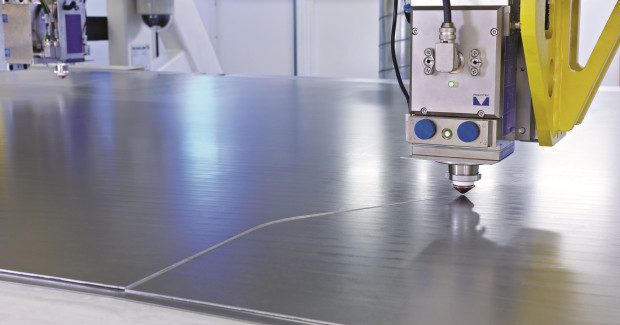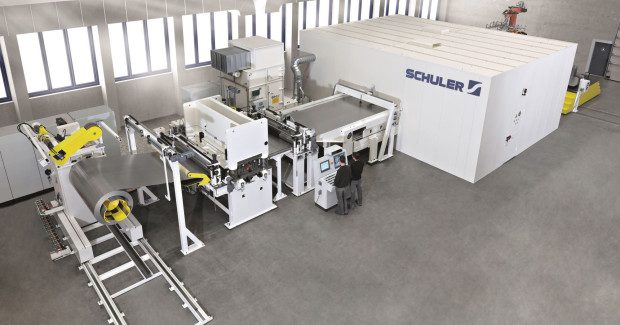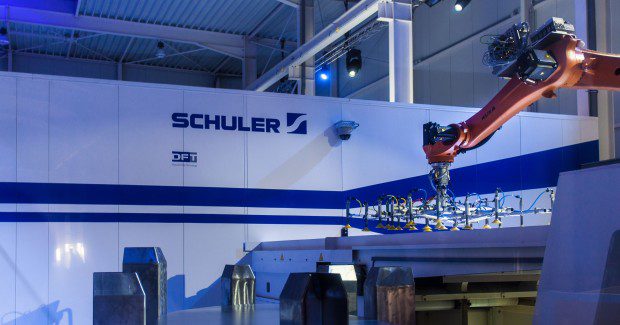Laser Blanking Line
The new laser blanking line from Schuler Incorporated combines cutting-edge laser methods with continuous coil feeding for maximum performance and flexibility, utilizing DynamicFlow Technology that is energy efficient and can process a variety of materials such as high-strength steels, with repeat accuracy and edge quality. The new line cuts blanks from a continuously fed aluminum coil. Using three laser heads in parallel, this blanking line can cut blanks with a thickness of 0.8 mm to 3 mm and a width of up to 2,150 mm.
Posted: November 13, 2013
Steel or aluminum blanks are cut with either dies or lasers for stamped parts such as car doors. Laser blanking lines have a major advantage over dies as they require no maintenance costs and are ideal for frequent production changes without lost production time. Schuler Incorporated (Canton, MI) takes laser blanking a step further by unveiling of its new laser blanking line that combines cutting-edge laser methods with continuous coil feeding for maximum performance and flexibility.
This new line utilizes DynamicFlow Technology (DFT) that is energy efficient and can process a variety of materials such as high-strength steels, with repeat accuracy and edge quality. With a 30 percent to 40 percent dimension reduction compared to blanking press systems, DFT laser blanking lines can be used in restricted spaces and low-height production halls without the need for foundation pits.
“This technology sets new standards for laser blanking speed as it provides maximum flexibility and short set up times, allowing even the smallest production amount to be produced quickly,” said Stephan Mergner, the managing director of Schuler Automation. “This revolutionary line, combined with the flow technology, has high uptime and is cost effective compared to traditional dies, providing manufacturers with the flexibility they need to produce a variety of shapes simultaneously.”
The new line cuts blanks from a continuously fed aluminum coil. Using three laser heads in parallel, Schuler’s blanking line can cut blanks with a thickness of 0.8 mm to 3 mm and a width of up to 2,150 mm. The patented process ensures strong productivity for surface-sensitive outer panels. With no restrictions of the blank’s contours, the tryout process is greatly accelerated and allows for a wide range of shape production. Additionally, the blank’s contours can be optimized while production is going, resulting in high output rates and tremendous flexibility.
In addition to optimized blank nesting, the amount of scrap and material costs are reduced. There is also a noticeable decrease in noise emissions, reducing the need for noise protection measures.
[email protected], www.schulerinc.com












